
This page shows you the key signatures of the all the major keys that you're likely to come across. They also apply to minor keys as well, but I'll just concentrate on the major keys for now.
A key signature is used to show which notes in a key are accented (i.e. they have a sharp or flat in their name). Each key has a unique combination of accented and unaccented notes, so you can tell which key a piece of music in just by looking at the accents shown in the key signature.
| The notes represented on a basic treble clef stave are shown in the digram on the right. |  |
This shows that the notes placed on the lines of the stave represent the notes (ascending) E, G, B, D and F. A popular way of remembering this is using "Every Good Boy Deserves Favour" (or anything else of your choice beginning with "F", but keep it clean).
The notes placed in the spaces between the lines are (ascending) F, A, C and E - which should be easy enough to remember.
All of these notes here are unaccented, as are all of the notes which appear in the C major scale. That means that a stave with just a treble clef is actually the key signature for the key of C major. How about a different key, one which does include accented notes? Well, let's have a look at G major:
| G Major = G A B C D E F# This key contains a single accented note (F#) so this key signature has a sharp sign on the 'F' line of the stave |
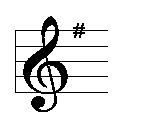 |
The table below shows all of the notes contained in each major key, and the corresponding key signatures
| Key | Notes | Key Signature |
|---|---|---|
| C Major | C D E F G A B | 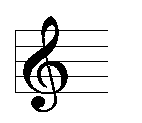 |
| G Major | G A B C D E F# |  |
| D Major | D E F# G A B C# | 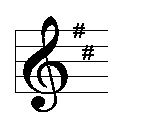 |
| A Major | A B C# D E F# G# | 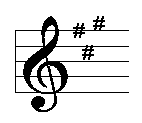 |
| E Major | E F# G# A B C# D# | 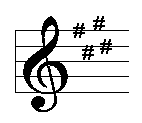 |
| B Major | B C# D# E F# G# A# | 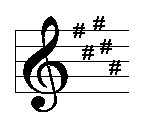 |
| F# Major | F# G# A# B C# D# E# | 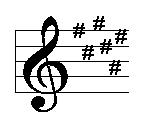 |
| C# Major | C# D# E# F# G# A# B# | 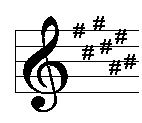 |
| Gb Major | Gb Ab Bb Cb Db Eb F |  |
| Db Major | Db Eb F Gb Ab Bb C | 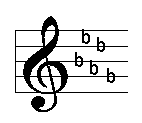 |
| Ab Major | Ab Bb C Db Eb F G | 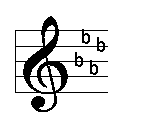 |
| Eb Major | Eb F G Ab Bb C D |  |
| Bb Major | Bb C D Eb F G A | 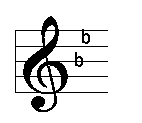 |
| F Major | F G A Bb C D E |  |
These are worth knowing, so try to spend some time learning them. It's great to be able to look at a piece of music and to immediately know what key it's written in.
There are also key signatures for minor keys. Check out the other tutorials on the website for some minor key theory and another tutorial about signatures for natural minor keys.
How useful did you find this tutorial?
| Product/Info... | PhatPhish Application | | | Product Help | | | GUPPY - PhatPhish for the web | | | About The Author |
|---|
| Get Stuff... | Download PhatPhish | | | Mechandise | | | Blank Stave And Tab Sheets | | | Tutorials |
|---|
| Do Stuff... | Register | | | Feedback | | | Links | | | Donate | | | Ask A Question |
|---|
| Social Media... | YouTube | | | | |
|---|
| Promote... | Spread The Word | | | Posters/Flyers |
|---|
| Play... | PhatPhish Picks - Boutique Plectrums |
|---|
| ©2002-2022, Dave Dixon / CyberFlotsam http://www.cyberflotsam.com |